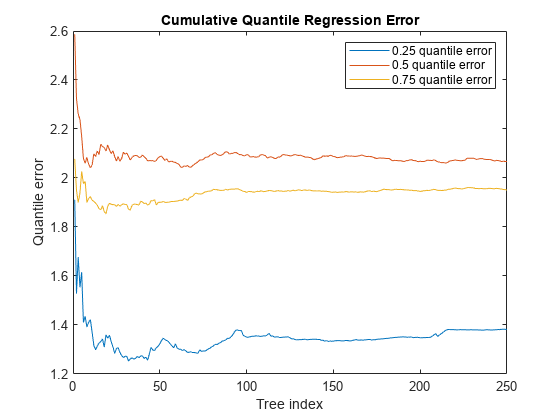quantileError
Quantile loss using bag of regression trees
Syntax
Description
err = quantileError(Mdl,X)X to the predicted medians
resulting from applying the bag of regression trees Mdl to
the observations of the predictor data in X.
Mdlmust be aTreeBaggermodel object.The response variable name in
Xmust have the same name as the response variable in the table containing the training data.
err = quantileError(Mdl,X,ResponseVarName)X. ResponseVarName is
the name of the response variable and Mdl.PredictorNames contain
the names of the predictor variables.
err = quantileError(___,Name,Value)Name,Value pair arguments. For example,
specify quantile probabilities, the error type, or which trees to
include in the quantile-regression-error estimation.
Input Arguments
Name-Value Arguments
Output Arguments
Examples
More About
Tips
To tune the number of trees in the ensemble, set
'Mode','cumulative'and plot the quantile regression errors with respect to tree indices. The maximal number of required trees is the tree index where the quantile regression error appears to level off.To investigate the performance of a model when the training sample is small, use
oobQuantileErrorinstead.
References
[1] Breiman, L. Random Forests. Machine Learning 45, pp. 5–32, 2001.
[2] Meinshausen, N. “Quantile Regression Forests.” Journal of Machine Learning Research, Vol. 7, 2006, pp. 983–999.
Version History
Introduced in R2016b
